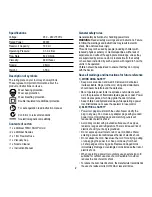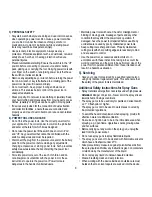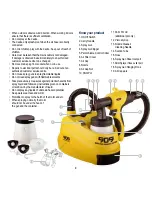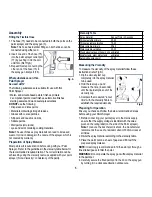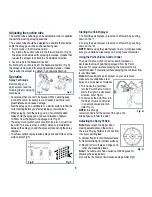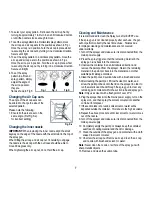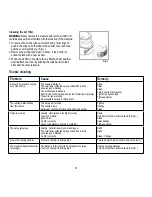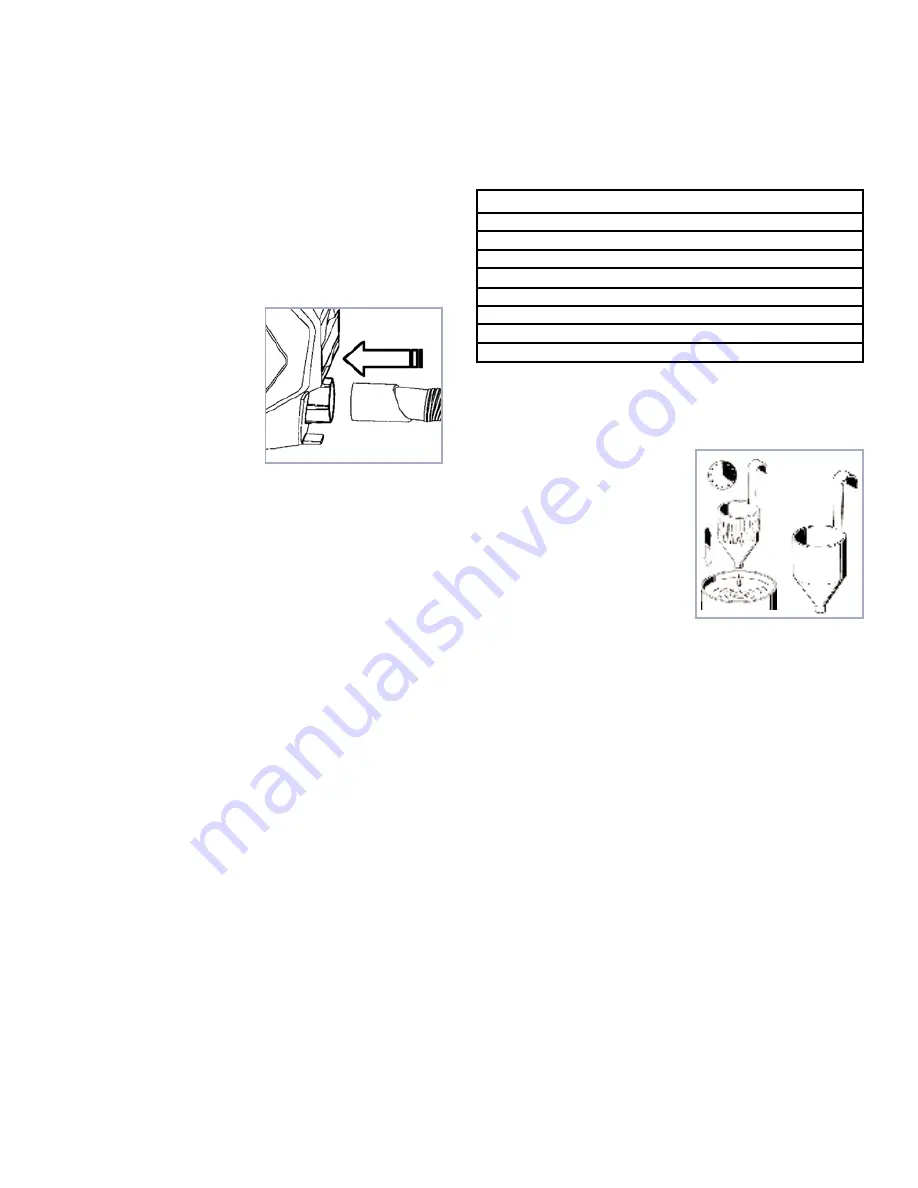
5
Assembly
Fitting the Flexible Hose
1. The hose (15) needs to be connected to both the ports on the
paint sprayer and the spray gun (3).
Note
: This hose has identical fittings on both ends so can be
connected using either end.
2. Insert one end of the hose (15)
into the paint sprayer outlet port
(17) by pushing it into the port
until firm. (Ref Fig A)
3. Repeat this step connecting the
other end of the hose (15) to
the spray gun inlet port (16).
What substances can this
Paint Sprayer
be used with?
The following substances are suitable for use with this
Paint Sprayer:
• Water- and solvent-based paints, finishes, primers,
2-component paints, clear finishes, automotive finishes,
staining sealers and wood sealer-preservatives.
DO NOT
use the following:
• Dispersion and latex paints
• Materials containing strong abrasives,
• Glazes with coarse particles,
• Strippers and caustic solutions,
• Silicate paints.
• Wall paints (emulsions)
• Lyes and acid containing coating materials.
Note:
The use of these spray materials can lead to increased
wear or corrosion damage in the nozzle of the sprayer, which is
not covered by warranty.
Preparation of Spray Material
Most paints will require dilution before using with your Paint
Sprayer. Refer to the guidelines in the viscosity table below for
the recommended required dilution. The correct dilution can be
achieved by using the viscosity test cup supplied with your paint
sprayer. (Note: Viscosity = consistency of the paint).
Measuring the Viscosity
To measure the viscosity of the spray material follow these
instructions (refer Fig B):
1. Dip the viscosity test cup
completely into the spray material
to be used.
2. Hold the test cup up and
measure the time (in seconds)
until the liquid empties out of the
viscosity cup.
3. Compare the measured “runout
time” with the Viscosity Table to
establish the required viscosity
Preparing for Operation
Ensure you check and follow the below recommended steps
before using your Paint Sprayer
1. Before connecting your paint sprayer to the mains supply,
ensure that the supply voltage is identical with the value
given on the rating label (on the side of the Paint sprayer).
Note:
To reduce the risk of electric shock, the manufacturer
recommends the use of a residual current of 30mA or less at
all times.
2. Dilute the spray material according to the viscosity table.
3. Place the paint pot on a sheet of paper and fill it with the
prepared spray material.
NOTE:
It is strongly recommended to fill the paint pot through a
fine strainer/gauze to filter the paint.
WARNING:
Do not operate the spray gun without spray material
in the paint pot.
4. Carefully secure the filled paint pot to the lid on the spray gun
by turning it in a clockwise direction until secure.
Fig. A
Fig. B
Viscosity Table
Spray material Run out Time in Seconds
Thinner-soluble primers
25-40
Thinner-soluble varnishes 15-40
Water-soluble primers 25-40
Water-soluble varnishes 20-35
Wood preservatives, strippers, oils undiluted
Disinfectants, plant protectants undiluted
Automobile spray paint 20-35


